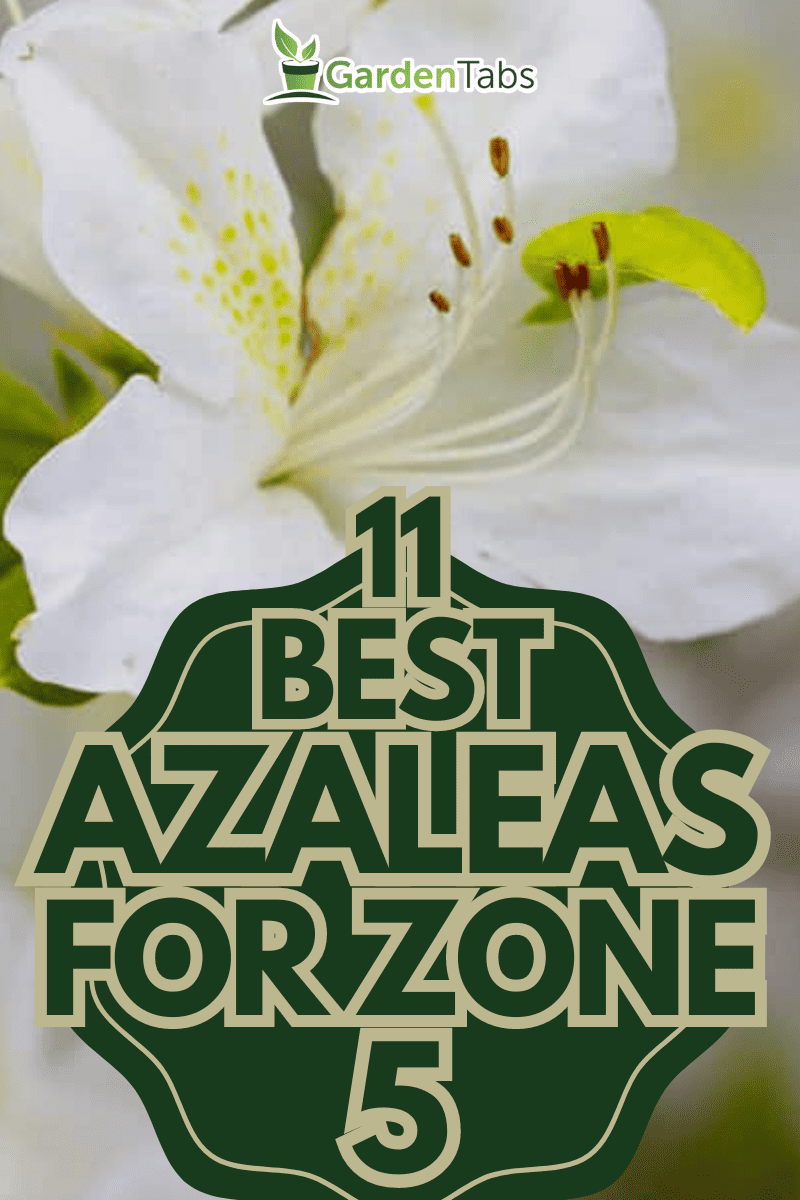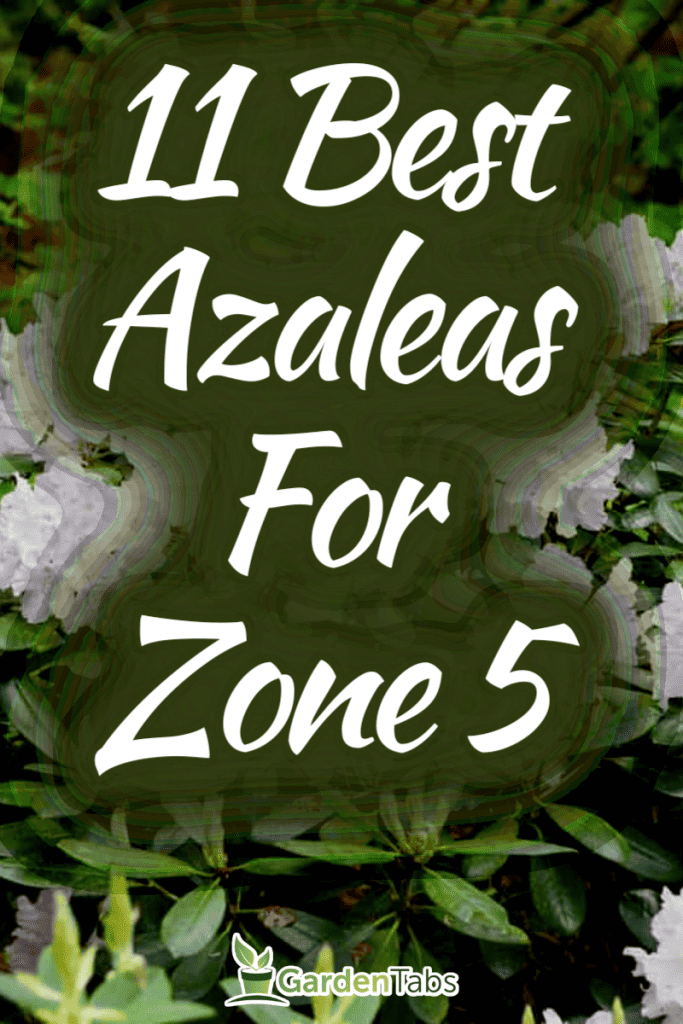Navigating through botanical challenges is complicated enough on your own. That's why we compiled a list of stunning azalea flowers that grow well in zone 5.
There is a variety of colorful azaleas of all sizes and scents.
These are the 11 best azaleas for zone 5:
- Girard's Pleasant White Azalea
- White Cascade Azalea
- Western Azalea
- Mountain Azalea
- Homebush Azalea
- Roseshell Azalea
- Flame Azalea
- Golden Lights Azalea
- Klondyke Azalea
- Weston's Innocence Azalea
- Mount Saint Helen's Azalea
Not all flowers are the same, so continue reading to discover the unique requirements of each azalea. We hope you enjoy this post and find inspiration for your gardens!
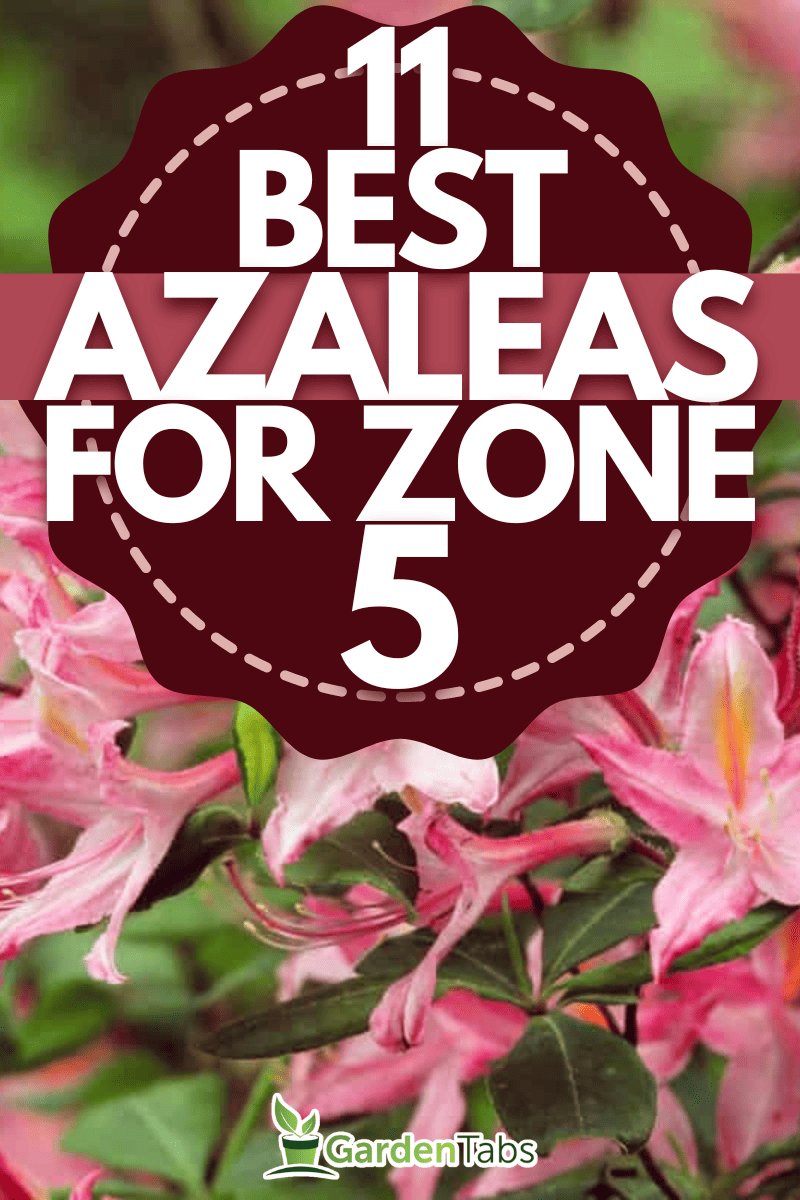
1. Girard's Pleasant White Azalea
The hardiness zone of a lovely white azalea is 5a. There are two different kinds of zone 5 plants. Zone 5a is typically -25 degrees to -15 degrees, and zone 5b is -15 degrees to -10.
The soil requirements for this hybrid are particular; it needs rich, acidic, well-drained soil. If the soil is too alkaline, the flowers might develop chlorosis.
This plant is prone to yellowing because it needs acidic nutrients; not every garden can provide that. Remember, these leaves stay green all year long - so if they change color, something is wrong!
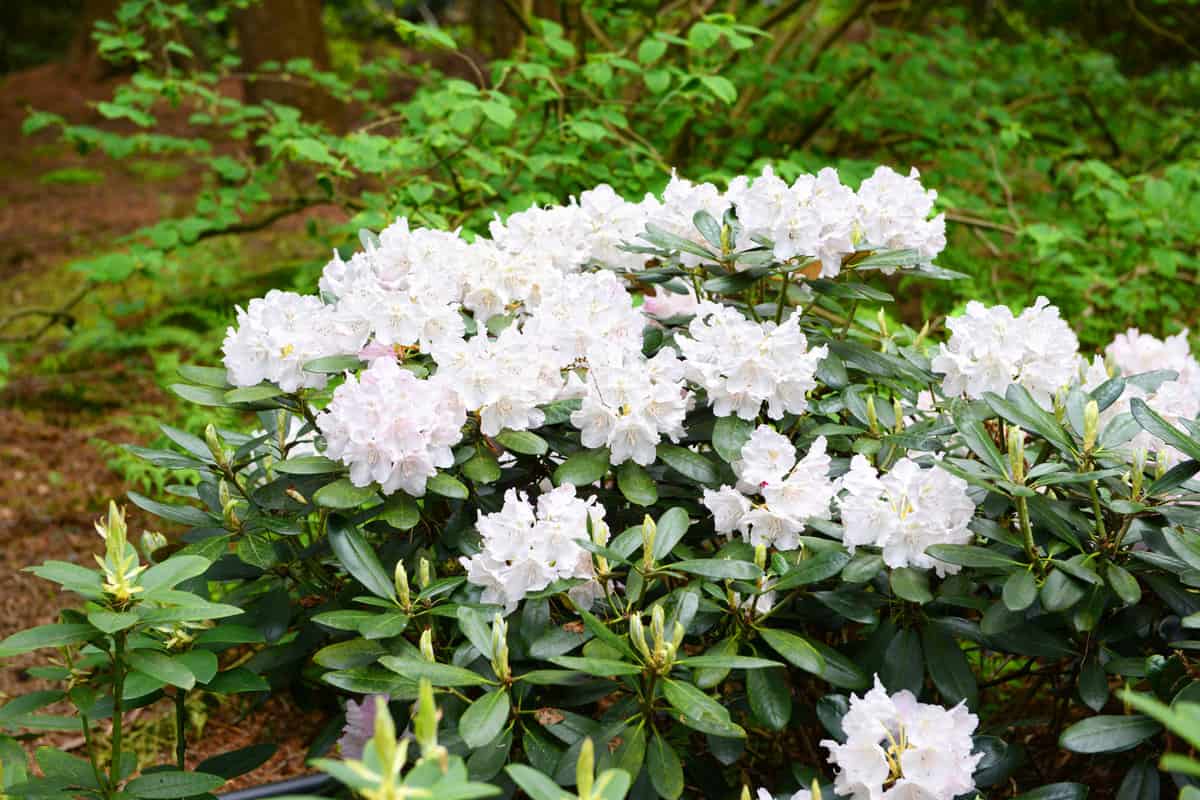
Girard's Pleasant White Azalea grows up to 4 feet tall, and roughly 5 feet spread out. The beautiful white flowers attract pollinators as well.
Try planting this one in a partially shaded area where it can still receive many hours of sunlight. The life expectancy for these white azaleas is 40 years.
One more tip: try not to prune the shrub until it has bloomed. If you prune it during the flowering season, you risk accidentally cutting off the flowers!
2. White Cascade Azalea
The white cascade azalea thrives in zones 5-8. Similar to the other white azalea, this plant prefers slightly acidic soil. Not quite as extreme as Girard's Pleasant White, but still below 6.5 on the pH scale.
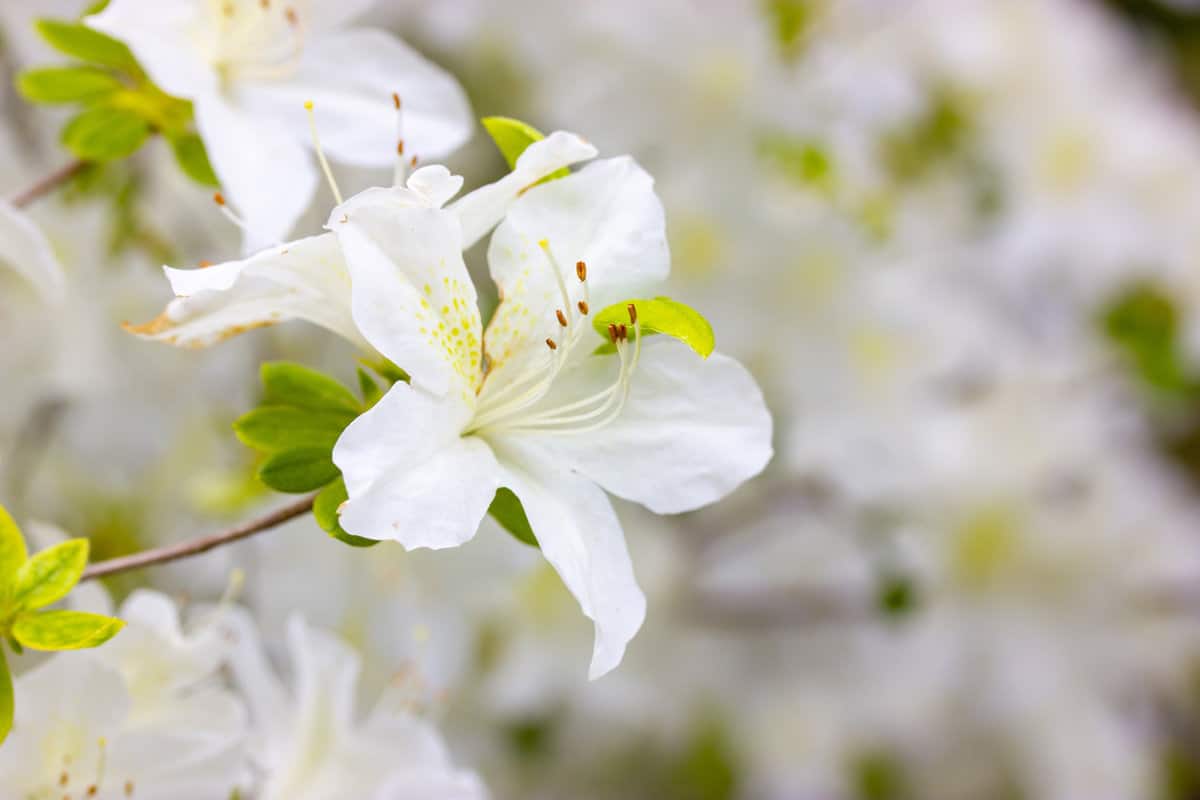
Occasionally, the white cascade will also have green spots on the flower. The ruffled petals create a unique texture, which makes them perfect for layering on garden beds.
The leaves become less glossy in the fall and winter seasons and turn a beautiful greenish-yellow color.
The most important tip for growing white cascade azaleas is planting them in an east-facing garden. The shrub will receive a perfect amount of daylight in the morning while cooling down as the day goes on.
3. Western Azalea
This azalea is unique because it prefers serpentine soil as its habitat. Due to erosion or tectonic activity, serpentine soil is created with rocks.
The soil contains high amounts of magnesium and low amounts of calcium and has an underwhelming nitrogen uptake.
As a result, the Western Azalea may not be the best choice if you cannot accommodate their soil needs.
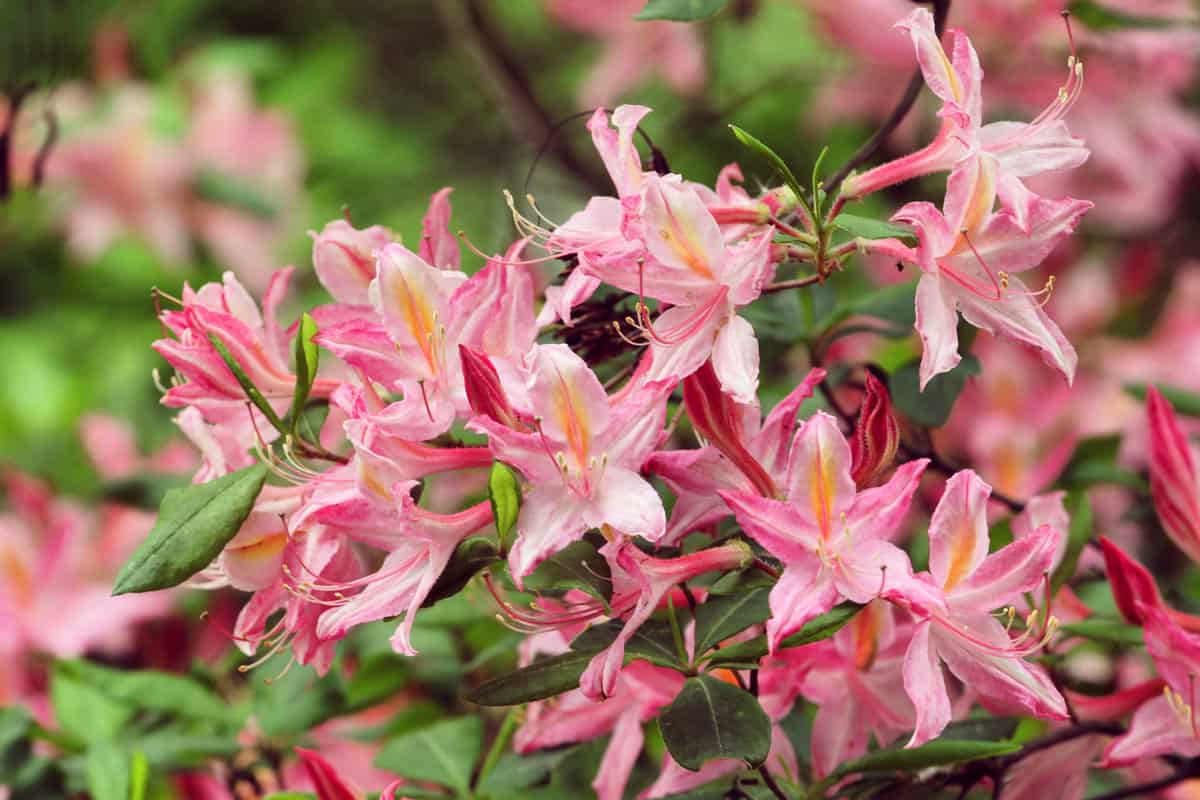
This shrub can grow up to 6 feet tall and wide. The flowers grow in clusters and sometimes have orange or yellow streaks of color on them.
The scent surrounding the plant is sweet cloves. Another unique quality is this azalea plant can regrow if damaged by fires. If the roots are still intact below the soil, the shrub can grow anew!
This might be especially useful during California wildfire season.
4. Mountain Azalea
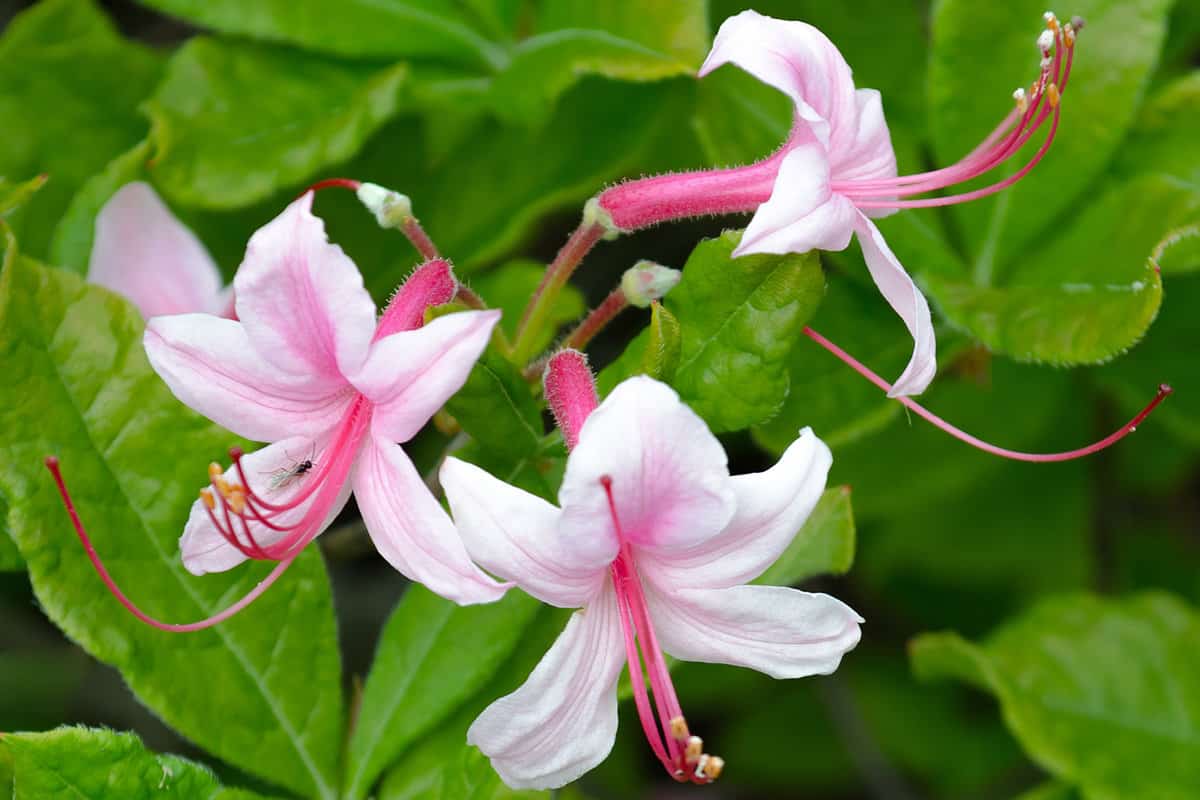
Mountain Azaleas thrive in acidic soil, particularly below 6.8 on the pH scale. This azalea can also grow in sandy areas and will grow to 8 feet tall in partial shade.
The flowers of a Mountain Azalea are almost always pink, although in rare cases, they can bloom white. A fun fact about this plant is that it is the most common native azalea in the southeastern United States.
If you have any questions about an unhealthy azalea plant, check out this post below:
5. Homebush Azalea
It seems like all azaleas must enjoy acidic soil because here is another gorgeous shrub thrives in slight acidity. It makes your neighbors turn their heads, and hummingbirds will make them too!
Be on the lookout for more birds, butterflies, bees, and hummingbirds after planting the Homebush Azalea. A few companion plants for the Homebush Azalea include bleeding heart and mountain laurel.
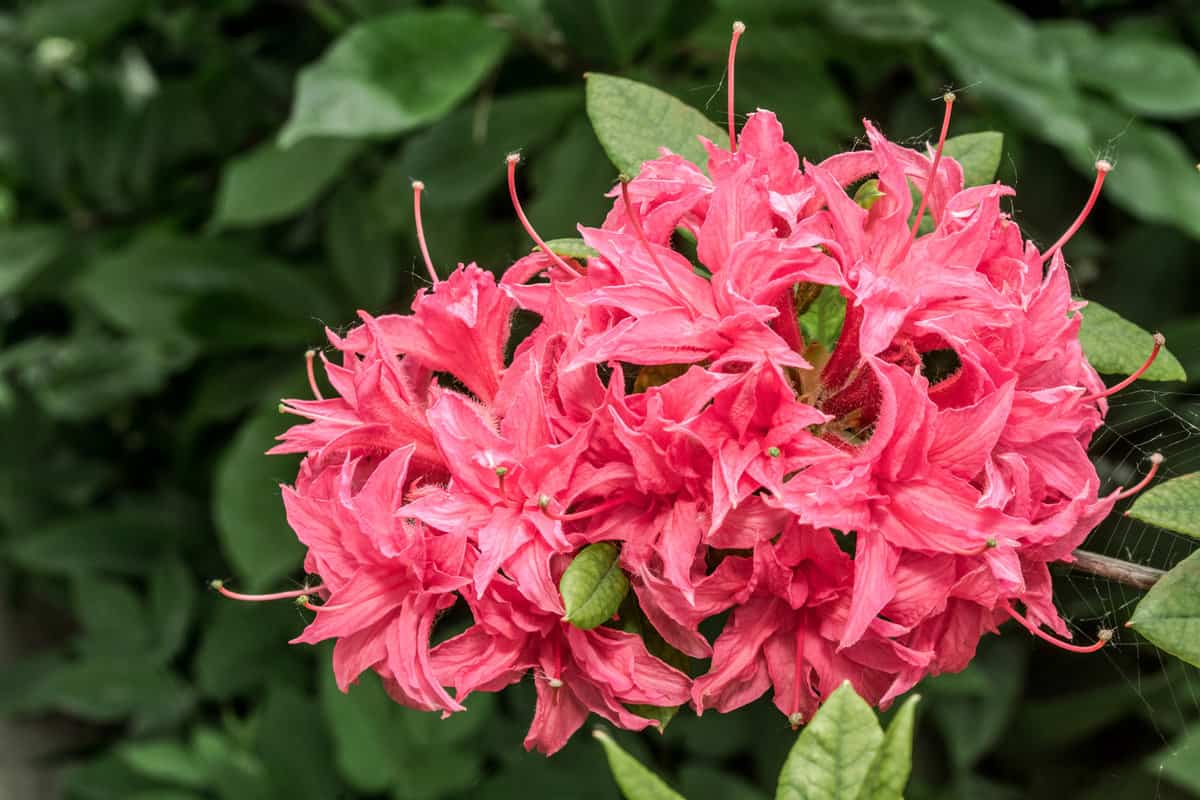
Unfortunately, the Homebush Azalea is toxic to housepets and should be kept away from small children.
In addition, humus is a crucial part of soil health. Humus is the dark, rich, loose soil full of nutrients. Here is a product that can increase the health of your soil, thus improving the azalea's life.


Check out this potting mix on Amazon.
5. Roseshell Azalea
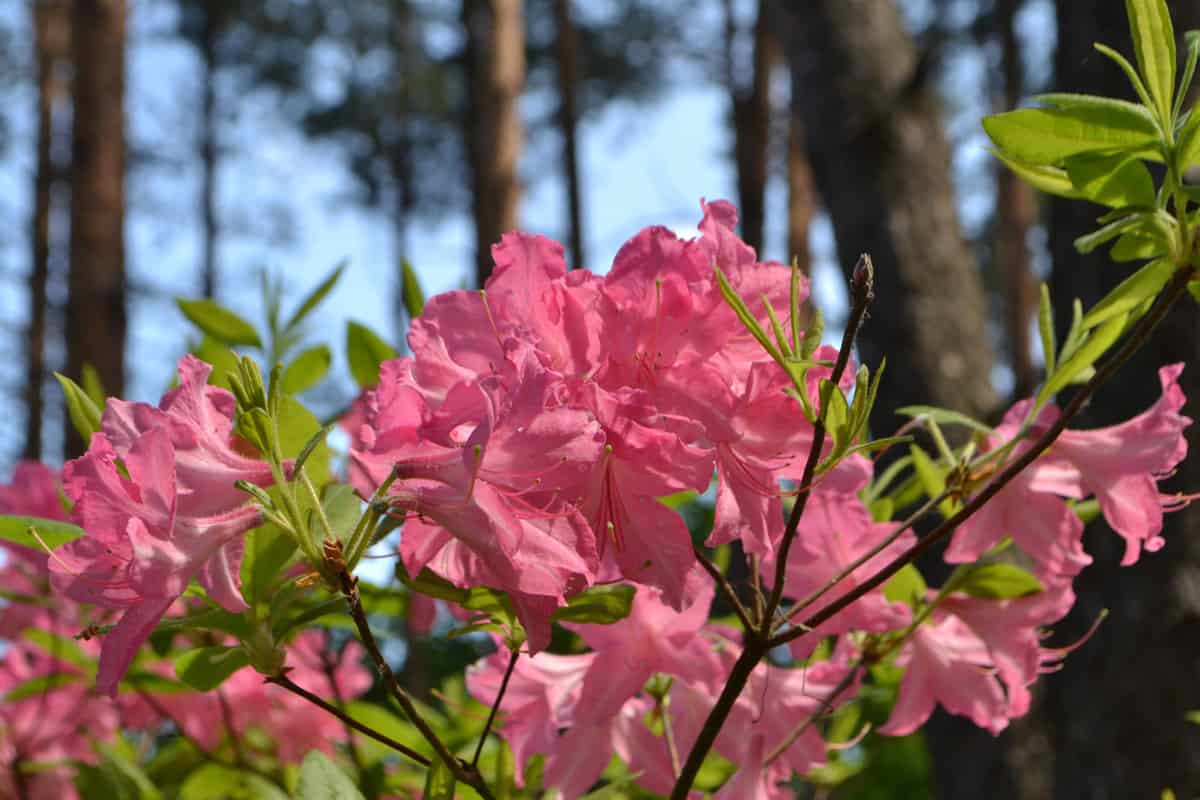
This species of azalea is strikingly similar to the Homebush Azalea. The only slight difference is the Roseshell Azalea can tolerate higher pH levels.
Although it prefers the same acidic soil that azaleas know and love - it will do perfectly fine without it. It would be smart to keep a pH indicator in the garden!


Follow this link to see a pH tester on Amazon.
6. Flame Azalea
The Flame Azalea starts at a minimum of 6 feet and can reach as tall as 12 feet! This is a plant you'll want to give some space.
The flowers naturally vary in color, often alternating between an orange and red pallet. It will often bloom in May and June, attracting many birds.
Unfortunately, all parts of this shrub are toxic. Avoid honey made from these flowers as well!
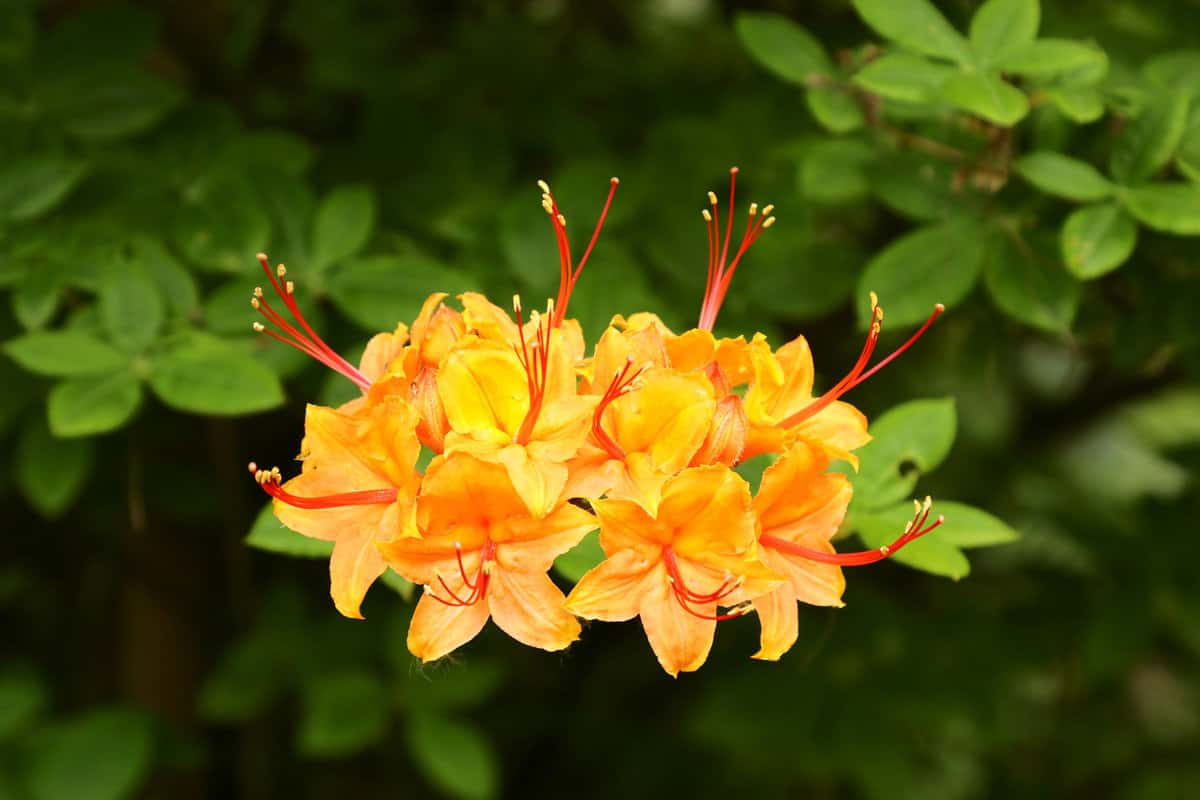
You can also propagate Flame Azaleas easily. When the seeds complete germination, you should transplant them into acidic soil with plenty of organic material.
This will prevent the soil from becoming too compact and stunting the growth of the azaleas.
7. Golden Lights Azalea
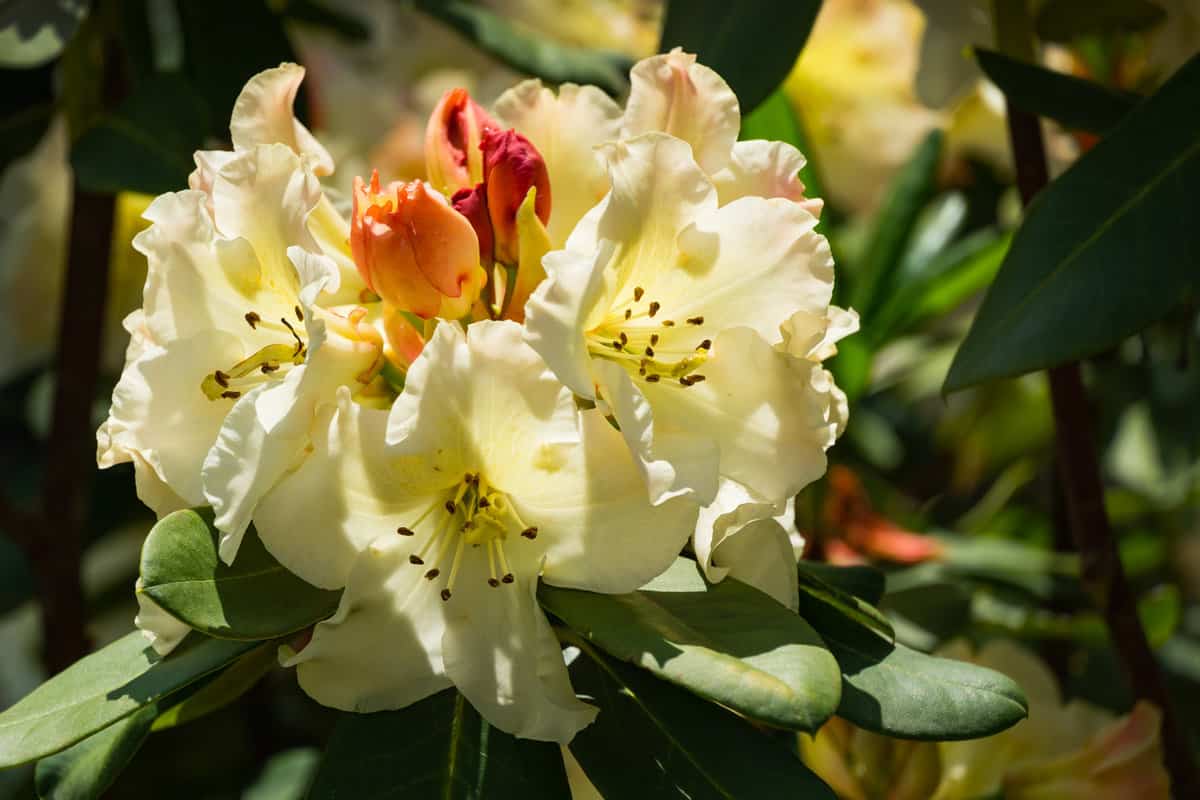
These beauties grow best in zones 3-7 and are low maintenance. The orange flowers often have yellow or salmon pink streaks of color on them.
They can tolerate direct sunlight but prefer filtered light and partial shade. One way to ensure a plant doesn't scorch in the sun is to use a shade sail.
This material is hung above plants to filter sunlight as it trickles down. Shade sails can be made from recycled sheets or sailboat sails (hence the name.)


View this sunshade on Amazon here.
This plant is surprisingly immune to many pests and diseases. As usual, be sure to prune only after flowering but before new buds begin to form.
A few companion plants include dogwood, Japanese maple, and lilac.
8. Klondyke Azalea
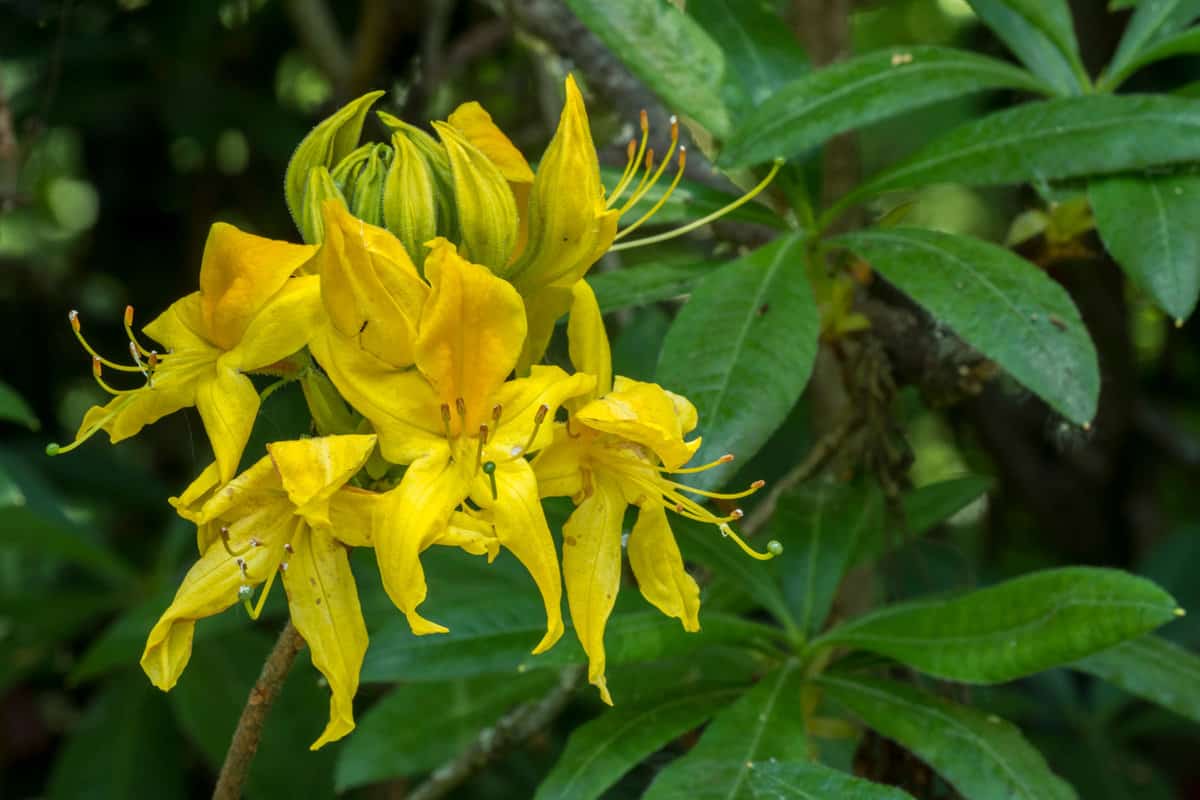
A plant named after the famous ice cream bar! Well, not quite. This plant gets its name from the amount of these flowers in Klondyke, Arizona.
The Klondyke Azalea is a hybrid plant that grows up to 8 feet tall. The flowers produce a sweet fragrance that practically calls pollinators by name.
The flowers will bloom throughout spring and early summer. If the flowers weren't enough to persuade you, picture the bronze leaves in the autumn season. Stunning!
9. Weston's Innocence Azalea
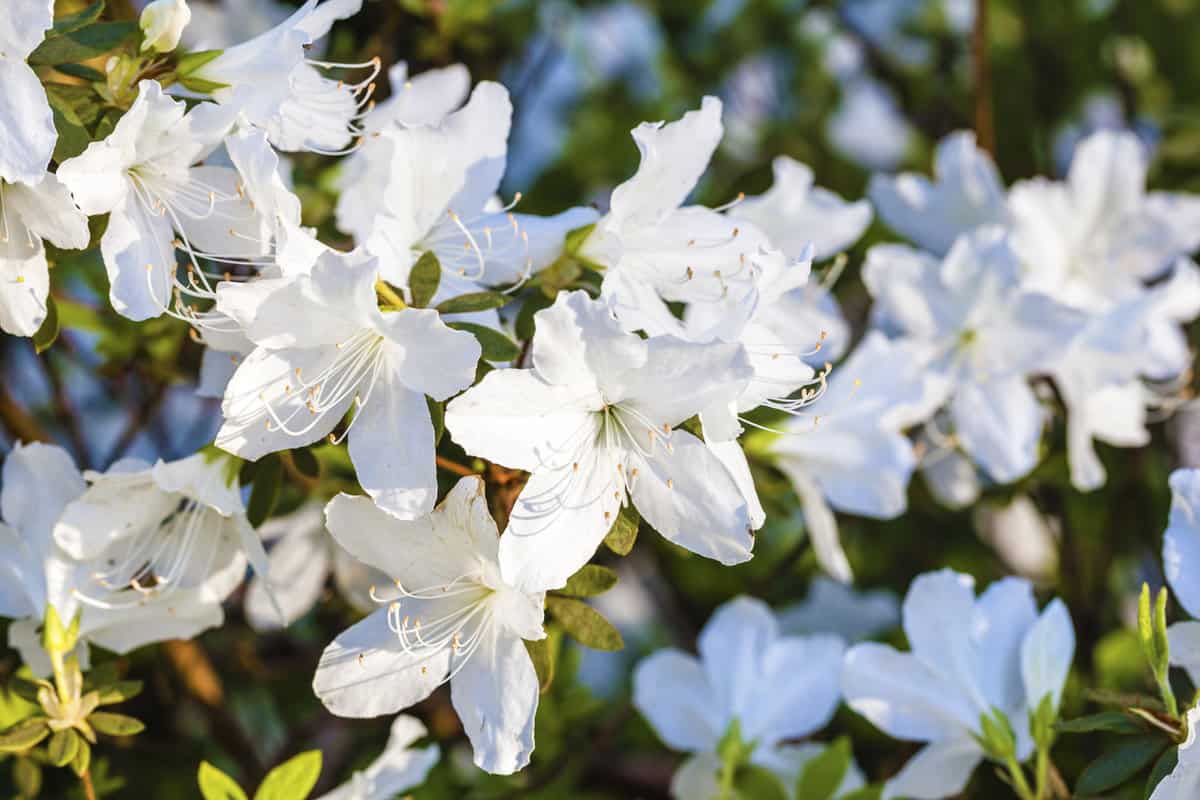
This azalea grows densely yet will still reach up to 8 feet tall. It can grow in clay and sandy soil, though humus-rich and acidic soil is always preferred.
The flowers clump together in bundles around eight flowers. Together, they produce an amazing smell that will make any neighbor jealous!
The flowers are pure white, and if they begin to turn any different colors, please inspect the shrub. The foliage will turn a deep burgundy hue in the autumn, so that color change is expected!
10. Narcissiflorum Azalea
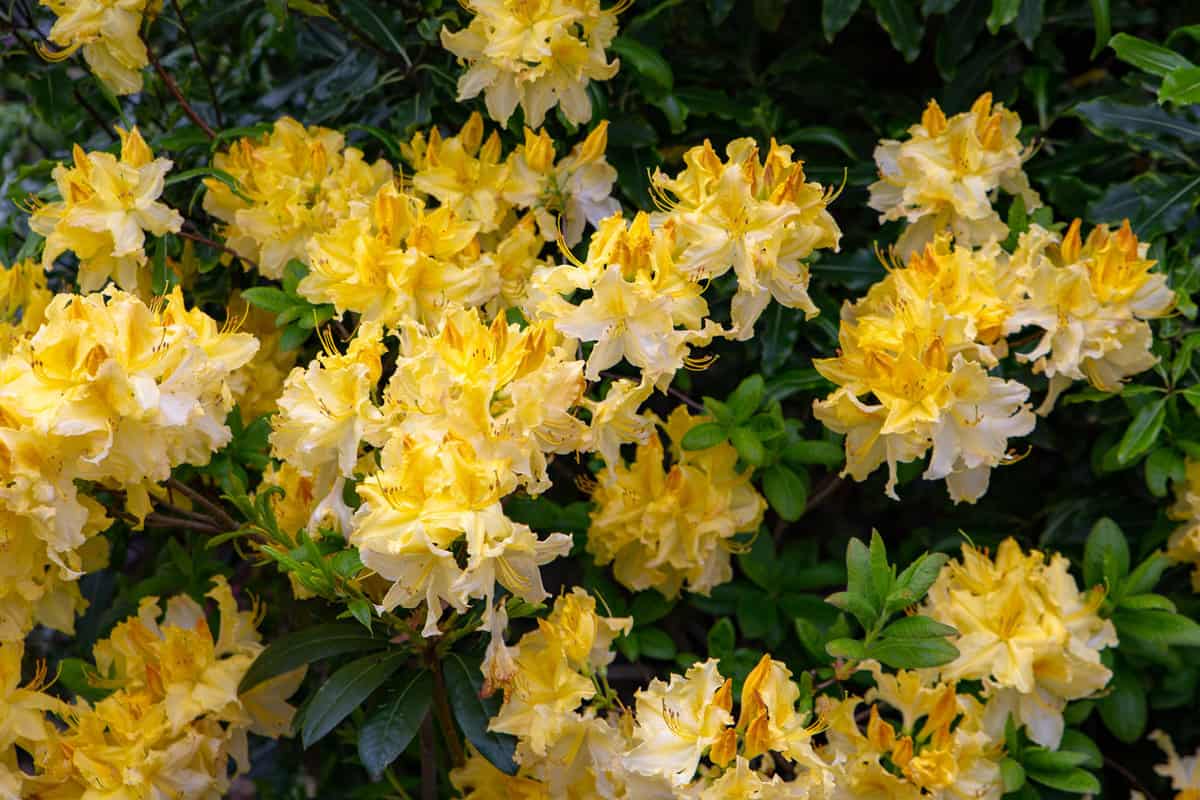
These flowers appear to grow inside of other flowers! It is a magnificent sight to see. This fact makes the Narcissiflorum Azalea a highly popular gardening asset.
They grow best in zones 5-8 and enjoy partially sunny habitats. These azaleas are rabbit resistant and will attract a bountiful amount of hummingbirds.
Sadly, the sweet fragrance must remain solely a fragrance - all parts of this plant are highly toxic. Be sure to wear protective gloves when handling poisonous plants (better safe than sorry!)
11. Mount Saint Helen's Azalea
Some people refer to this plant as the Late Midseason Azalea. You should plant Mount Saint Helen's Azalea in shallow dirt where it can receive partial shade and sunlight.
It grows vertically upward of about 6 feet and is often used to shade plants below. A few companion plants include hydrangea, blueberries, and spotted dead nettle.
Consider planting one or more of these appropriately under the azalea shrub!
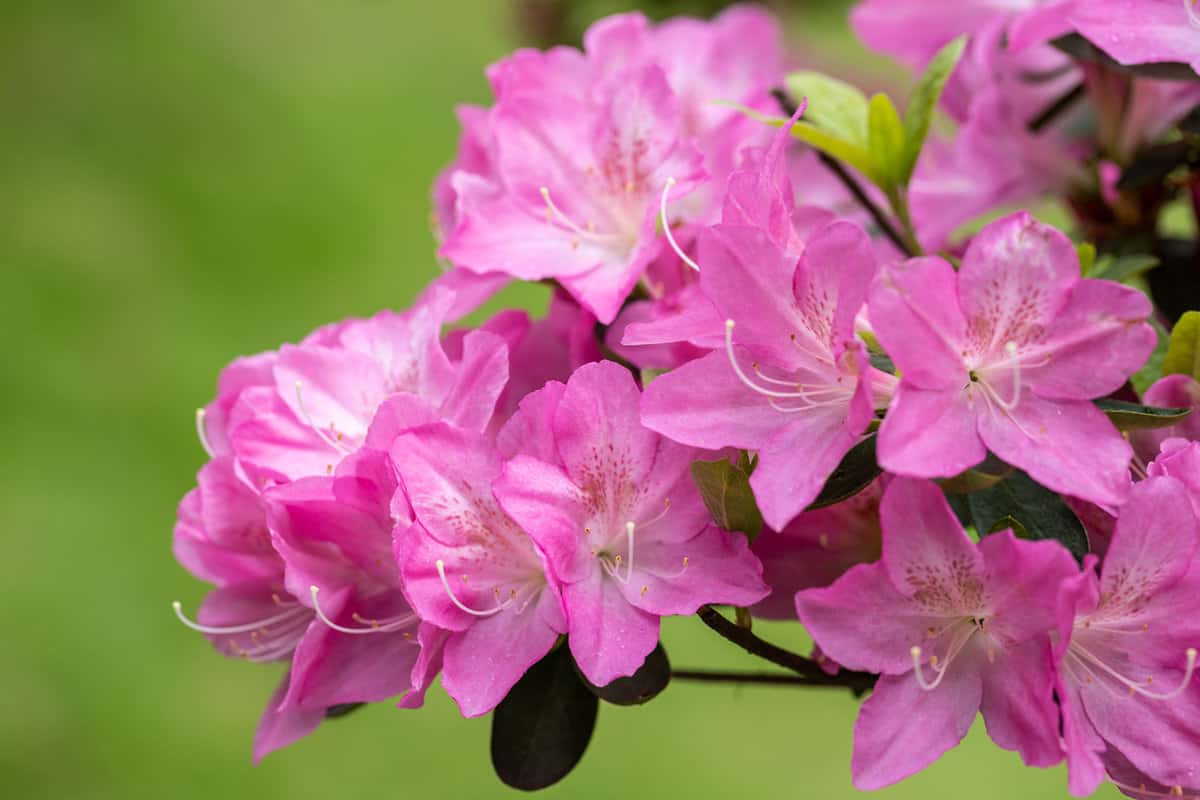
It is sometimes used as a privacy screen, as many tall shrubs and hedges are.
If that is the case, we recommend purchasing an already established azalea plant. That way, it can continue growing upward while serving its natural privacy screen purpose.
To Finish Up
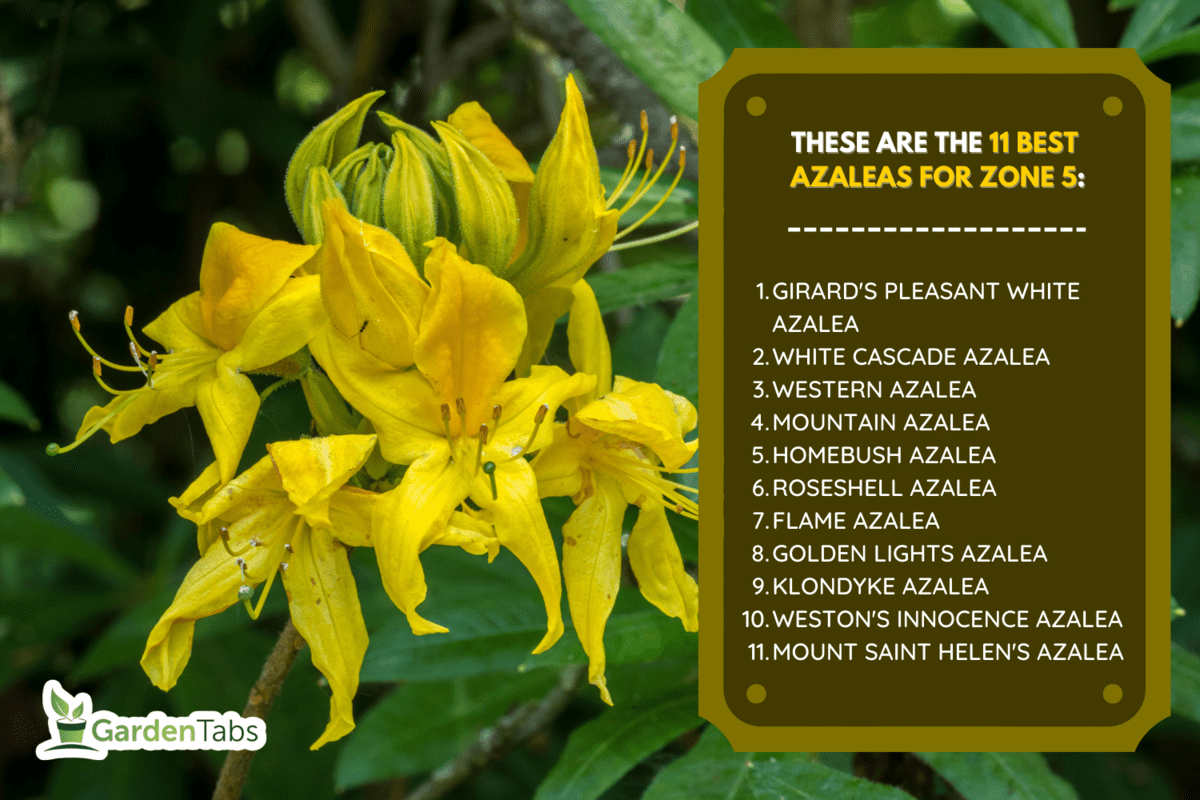
We hope you enjoyed learning about the zone 5 azaleas! They love acidic soil, produce lovely scents, and shouldn't be consumed. For more information on zone 5 plants, visit our other posts below.

